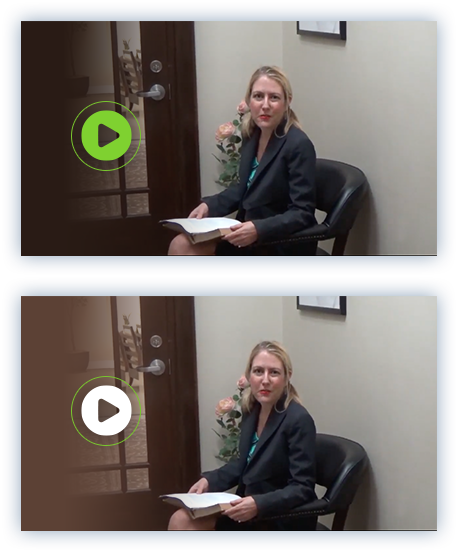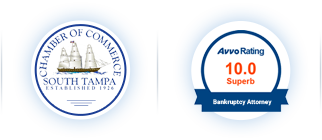Tampa Chapter 13 Bankruptcy Attorney
When an individual or married couple face serious financial difficulties, sometimes the option of filing for bankruptcy comes up as a possible solution. Bankruptcy can be a very helpful option for those who have serious debt problems because it has the ability to stop creditor collection actions, as well as permanently wipe out most types of debt. This gives individuals, called debtors, a “fresh start” financially.
There are two basic types of bankruptcy available to individuals—liquidation and reorganization. In a liquidation bankruptcy (also called a Chapter 7 bankruptcy), the non-exempt assets that are owned by an individual are sold by the trustee to settle all claims against the debtor. (For more information about Chapter 7 bankruptcy, see our website here). In a reorganization bankruptcy (also called a Chapter 13 bankruptcy), the debtor who has regular income is allowed to develop a plan to repay some or all of his or her debts. At the conclusion of the repayment plan, the court orders that any remaining balance on the plan debts is discharged, which means that the debtor is released from liability for any balance on the debts contained in the Chapter 13 plan. If you have more questions or need assistance, contact our Tampa chapter 13 bankruptcy attorney.
How Chapter 13 Bankruptcy Works
Chapter 13 bankruptcy is available to an individual, sole proprietorship, or an unincorporated business entity as long as the debtor’s debts are below the limits set by the United States Bankruptcy Code. Currently, this means that an individual’s unsecured debts must be less than $383,175 and secured debts must be less than $1,149,525.
A Chapter 13 case begins by filing a petition with the bankruptcy court. The debtor also must file a repayment plan for the court’s approval. Repayment plans can range from three to five years.
The repayment plan must outline how the debtor proposes to make fixed payments to the trustee on a regular basis, typically biweekly or monthly. It is possible for the debtor’s repayment plan to offer creditors less than full payment on their claims. However, the debtor must commit to making payments using his or her disposable income and the plan itself must provide for creditors to receive at least as much as they would if the debtor’s assets were liquidated (under Chapter 7).
Once the bankruptcy court approves the debtor’s Chapter 13 repayment plan, the debtor typically makes plan payments through a payroll deduction.
Along with the proposed Chapter 13 plan, a debtor is required to include the following information:
- a schedule of assets and liabilities;
- a schedule of current income and expenditures;
- a schedule of executory (current) contracts and unexpired leases;
- a statement of current financial affairs (which lists all creditors and the amount and nature of their claim), as well as information about the debtor’s income, property holdings, and living expenses;
- a certificate of credit counseling and a copy of any debt repayment plan developed through credit counseling;
- pay stubs, if any, for 60 days before the filing;
- a statement of monthly net income;
- a statement of any anticipated increase in income or expenses after filing;
- a record of any interest that the debtor has in any federal or state qualified education or tuition accounts; and
- a copy of the debtor’s tax return for the most recent tax year.
Benefits of Filing for Chapter 13 Relief
There are several benefits of filing for Chapter 13 relief, including:
-The Automatic Stay – When an individual files for bankruptcy relief under Chapter 13, the bankruptcy court gives notice of the bankruptcy case to all creditors who are listed in the debtor’s schedules. The notice informs creditors that the debtor’s bankruptcy filing automatically stopped (or “stayed”) the creditors from conducting any further collection actions against the debtor and his or her property, including any lawsuits, wage garnishments, or other debt collection efforts (such as making phone calls, sending letters, or contacting the debtor in person). Chapter 13 also contains a special automatic stay that protects co-debtors and generally prevents creditors from contacting any co-debtors as well.
-Ability To Save Home From Foreclosure – An individual can use a Chapter 13 bankruptcy to save a home from foreclosure. When a Chapter 13 petition is filed, the automatic stay has the effect of immediately stopping a foreclosure proceeding or action as long as the foreclosure sale has not been completed. The debtor can then set forth a repayment schedule in the Chapter 13 plan outlining how past-due payments will be brought current over a reasonable period of time. If payments are made as called for, the foreclosure action cannot be continued.
-Ability To Modify Terms Of Some Existing Agreements – Filing for Chapter 13 relief also can give a debtor the ability to modify the terms of some outstanding agreements, such as by stripping off an underwater second (or later) mortgage, cramming down a loan or mortgage by reducing the total amount owed to the current value of the property, or by obtaining a lowered interest rate.
Filing For Chapter 13 Bankruptcy
Chapter 13 bankruptcy can be a helpful answer for individuals who have regular wages but who also are experiencing serious financial difficulties. If you have questions the knowledgeable and experienced Tampa chapter 13 bankruptcy attorneys at Samantha L. Dammer can help you with all bankruptcy-related requirements so that you can get your fresh start. Call us today at 813-221-3759 to get your bankruptcy-related questions answered. We are here to help.


